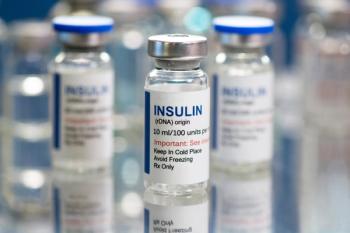
Delirium Is Common for Patients With COVID-19 in ICU, With Potential Lasting Consequences
Key Takeaways
- Delirium in COVID-19 ICU patients is linked to CNS invasion, inflammation, and environmental factors, worsening prognosis.
- The ABCDEF bundle aids in managing delirium and PICS, though its efficacy in COVID-19 patients needs further assessment.
Delirium is a common syndrome experienced by patients with COVID-19 while being treated in the ICU, according to a session at the 2020 ASHP Midyear Clinical Meeting and Exhibition.
Delirium is a common syndrome experienced by patients with coronavirus disease 2019 (COVID-19) while being treated in the intensive care unit (ICU), according to a session at the 2020 ASHP Midyear Clinical Meeting and Exhibition.
Delirium is a syndrome that is characterized by the acute onset of cerebral dysfunction with a change or fluctuation in baseline mental status, as well as inattention and either disorganized thinking or an altered level of consciousness.
There are 3 different subtypes of delirium that can be categorized by providers based on the patterns of symptoms being presented—hyperactive, hypoactive, and mixed.
In general, delirium occurs frequently in patients experiencing life-threatening illnesses that require intensive medical support. Upon the occurrence of delirium in a patient, there is also an increased likelihood of a poorer prognosis for the patient outcome, especially among the elderly.
For patients experiencing delirium while being treated in the ICU, routine monitoring using the confusion assessment method for the ICU (CAM-ICU) or intensive care delirium screening checklist (ICDSC) is recommended.
Many hospitalized patients with COVID-19 will develop delirium, according to Janelle Poyant, PharmD, BCCCP, BCPS, a critical care clinical pharmacy specialist at the Tufts Medical Center.
“Encephalitis and encephalopathy with acute psychosis has been well documented in the context of influenza, and some data suggest that this may result as a consequence of intense systemic and brain inflammatory responses,” Poyant said during the presentation at ASHP.
In patients with COVID-19, delirium may be due to a direct central nervous system (CNS) invasion by the virus, induction of CNS inflammatory mediators, metabolic dysregulation, or ineffective iatrogenic elements, including prolonged mechanical ventilation time, polypharmacy, or experimental treatments. Additionally, there are environmental factors that can also increase likelihood of delirium in COVID-19 patients, such as extreme isolation and the inability to freely ambulate.
In light of the multiple factors that can contribute to delirium in COVID-19 patients, there’s a greater need to implement sedation approaches that would limit the rate of delirium, sedation-related encephalopathy, and post-intensive care syndrome (PICS).
The evidence-based guide that is the ABCDEF bundle can act as a helpful tool for approaching the organizational changes needed for supporting COVID-19 patients in ICU, according to Poyant. The ABCDEF bundle includes:
- Assess, prevent, and manage pain.
- Both spontaneous awakening trials and spontaneous breathing trials.
- Choice of analgesia and sedation.
- Delirium: assess, prevent, and manage.
- Early mobility and exercise.
- Family engagement and empowerment.
“Despite the known benefits of the ABCDEF bundle, it’s impact has not been directly assessed in patients with COVID-19. However, the use of this bundle should be encouraged when appropriate to improve ICU patient care outcomes, despite the numerous barriers present,” Poyant said.
Poyant also noted that during the COVID-19 pandemic, providers have not only been working to keep patients with COVID-19 alive, but they have also been working to prevent long-term complications that have been increasingly documented as being present following their stay in the ICU. However, there is limited information available for providers on the prevalence, duration, underlying causes, and effective management strategies for these lingering signs and symptoms.
“Early reports do suggest that some patients with COVID-19 who have been treated in the ICU express manifestations of [PICS], which has been described in patients without COVID-19,” Poyant said. “PICS is a cognitive, psychiatric, and/or physical disability that affects survivors of critical illness, and it persists after a patient leaves the ICU.”
Some common persistent symptoms that have been reported for patients with COVID-19 who are experiencing PICS include fatigue, joint pain, chest pain, shortness of breath, as well as worsening quality of life. According to research on the subject, 44.1% of post-COVID-19 patients experienced worsened quality of life 60 days after the onset of symptoms, Poyant noted.
“One study from China found that pulmonary function was still impaired 1 month after hospital discharge. Patients may continue to experience headaches, vision changes, hearing loss, and taste, smell, and mood changes for up to 3 months after the diagnosis of COVID-19,” Poyant said.
Although there’s no single risk factor that’s been associated with PICS, there are opportunities to minimize the risk through medication management, use of the ABCDEF bundle, physical rehabilitation, family support, and improved education regarding the details of the syndrome.
“Something else that can be utilized is follow up clinics, something like the critical care outpatient clinic that we have at Tufts Medical Center, where a pharmacist, a physician, a nurse, a social worker, and a physical therapist work together in order to screen for ongoing needs post-discharge. We focus on our ICU as well as our COVID-19 ICU patients,” Poyant said.
Additionally, Poyant noted that during the COVID-19 pandemic, pharmacists have a unique opportunity to perform all aspects of the medication-use process, combining the roles of both the inpatient and outpatient pharmacists in order to effectively support patients with COVID-19.
REFERENCE
Poyant JO, Ritchie BM. COVID-19: Challenges and Considerations for Pain and Sedation Management in Mechanically Ventilated Patients with COVID-19. Presented at: 2020 ASHP Midyear Clinical Meeting and Exhibition; Virtual; December 6-10, 2020. onlinexperiences.com/scripts/Server.nxp. Accessed December 11, 2020.
Newsletter
Stay informed on drug updates, treatment guidelines, and pharmacy practice trends—subscribe to Pharmacy Times for weekly clinical insights.







































































































































































































